Devilish times for hickory: Hickory horned devils and royal walnut moths, Citheronia regalis
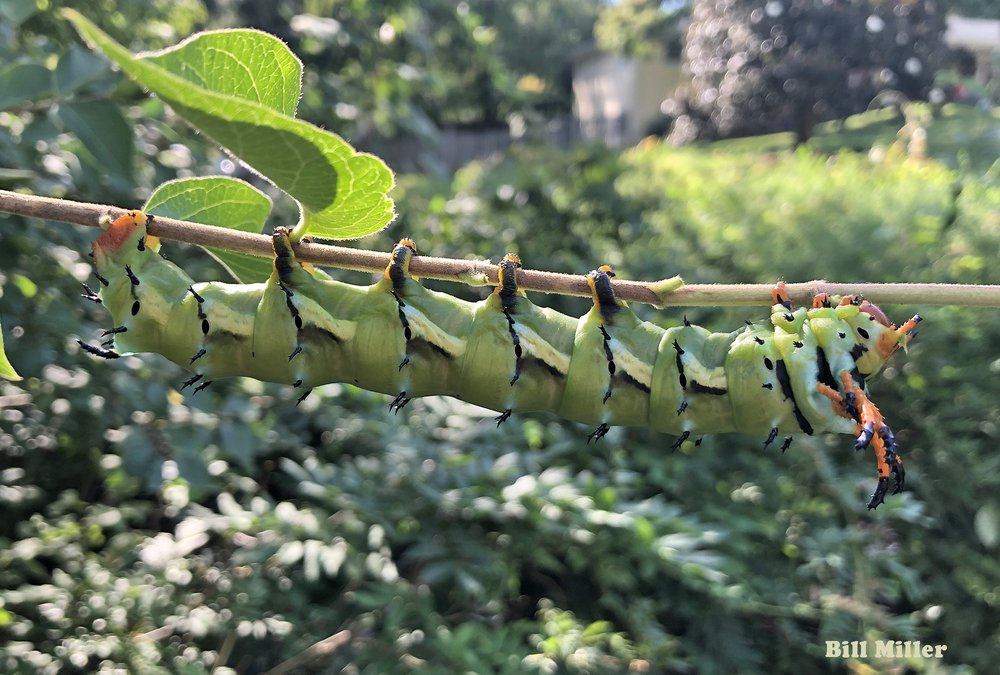
Adorned with horns and almost six inches in length, the hickory horned devil caterpillar is harmless unless you are a hickory tree. Image credit: Bill Miller
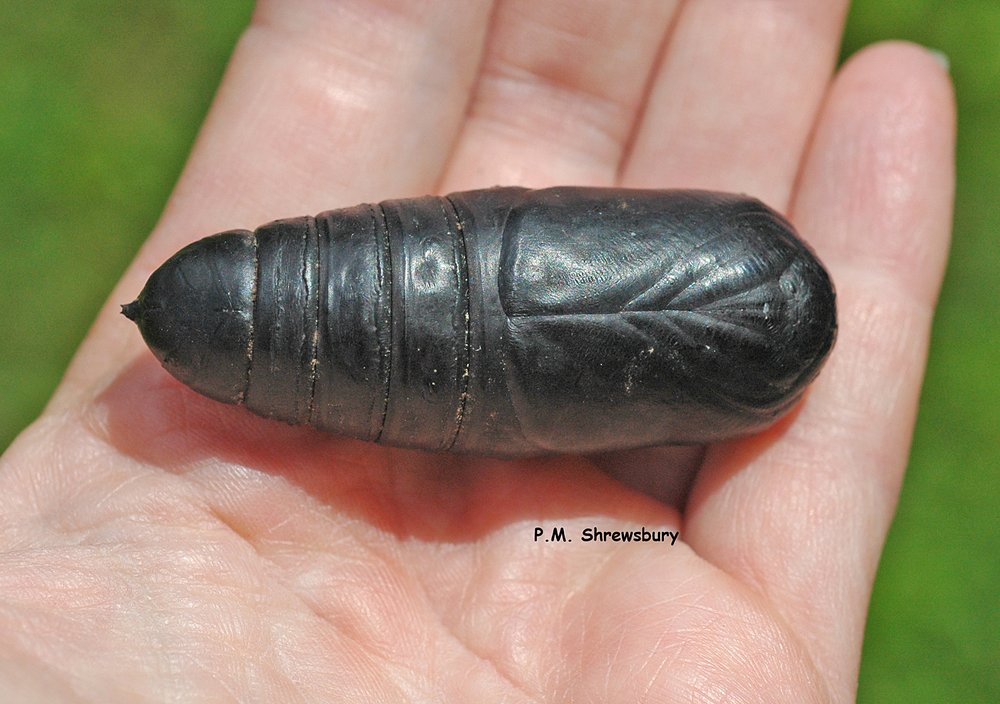
The ginormous pupal case of the royal walnut moth is the largest one I’ve ever seen.
Hickory trees are one of my favorites by virtue of their delicious edible nuts and spectacular fall color, which is just around the corner. Ah, but I’m not the only one with a fondness for hickory and this week Bug of the Week had the chance to visit one of the coolest members of the Lepidoptera clan who also love hickory, not for its nuts or fall color but for its nutritious leaves. Let’s see one of the most fantastic members of the silk moth family, a huge beautiful caterpillar called the hickory horned devil. Last week a lucky gardener shared an image of an enormous caterpillar resting on vegetation in his landscape. How lucky was he to find a hickory horned devil? Real lucky, as my one and only personal encounter with this beauty happened a few years ago when bug-centric neighbors delivered to me a rather large, dark, cigar-shaped object they discovered in the duff beneath a walnut tree. Not many insects in Maryland form a pupa that can fill a hand, but this one did. The lucky pupa took up residence on my kitchen counter for a month or so until one morning a vacant pupal case was replaced by a very impressive moth clinging to the sofa in the family room.
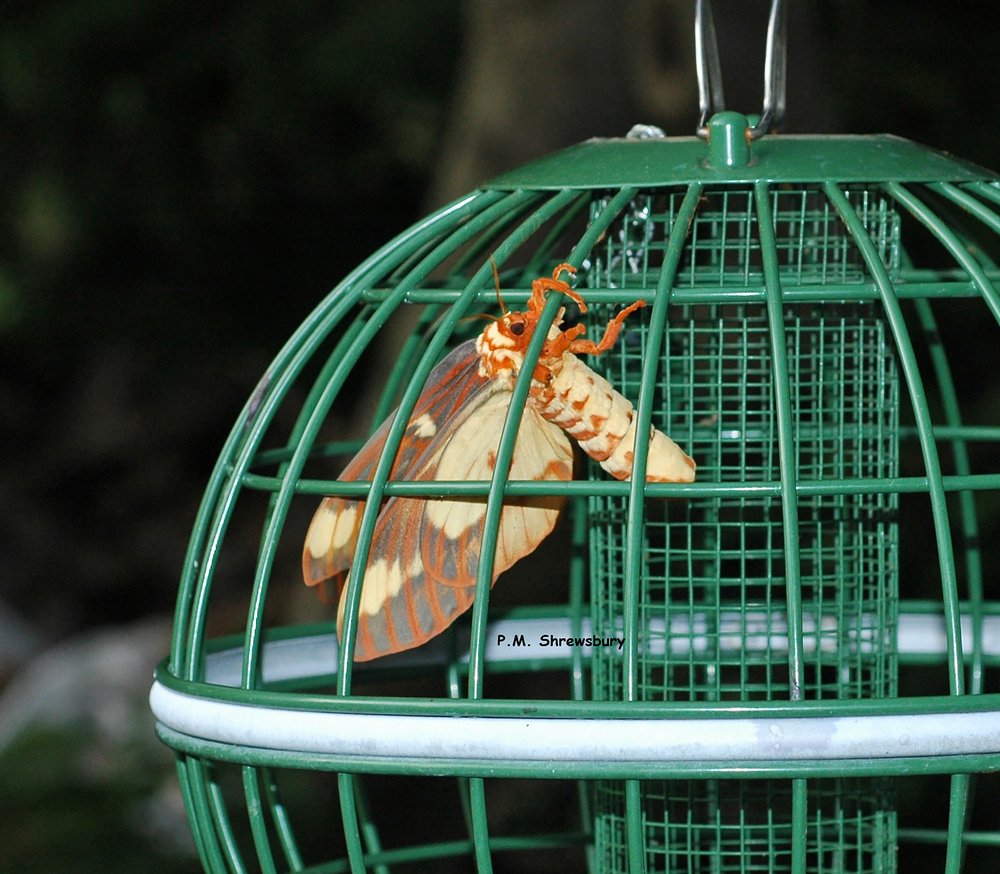
From her royal chamber, the female royal walnut moth released a pheromone to attract a mate. It worked and in the morning a male had joined her in the cage.
The royal walnut moth, a.k.a. regal moth, has but one generation in Maryland each year. Life is short for giant silk moths such as this. Unlike its relatives, butterflies or hawk moths, silk moths lack functional mouthparts and do not eat as adults. They live only a few days. Their sole mission is to find a mate, mate, and lay eggs in a suitable place before being discovered and eaten by a bird or other hungry predator. To attract a mate, a female moth releases a volatile attractant called a sex pheromone. Usually, this takes place on an upright structure such as the trunk of a tree on the night following emergence from the pupal case. Not wishing to stand in the way of true love, but concerned that this magnificent princess would be eaten by a bird, my royal walnut moth was confined, Rapunzel-style, in a predator-proof bridal chamber, which was in this case a squirrel-proof bird feeder. On the evening of her resplendent debut, she was placed outside to court her mate. Her pheromones were strong and apparently irresistible. In her chamber the following morning was a male royal walnut moth.
‘Tis the season when hickory horned devil caterpillars will be seen strolling on patios as they search for places to pupate. Their story began weeks ago when male and female royal walnut moths hooked up and the female deposited eggs on leaves of hickory and other members of the walnut family. Eggs hatched into bizarre tiny caterpillars with very stout spines. They grew into gorgeous green giants before moving to the soil to form a pupal case to pass the wicked winter. Next spring beautiful royal walnut moths will emerge from these pupal cases. Video credits: Diane Pedicini, M. J. Raupp
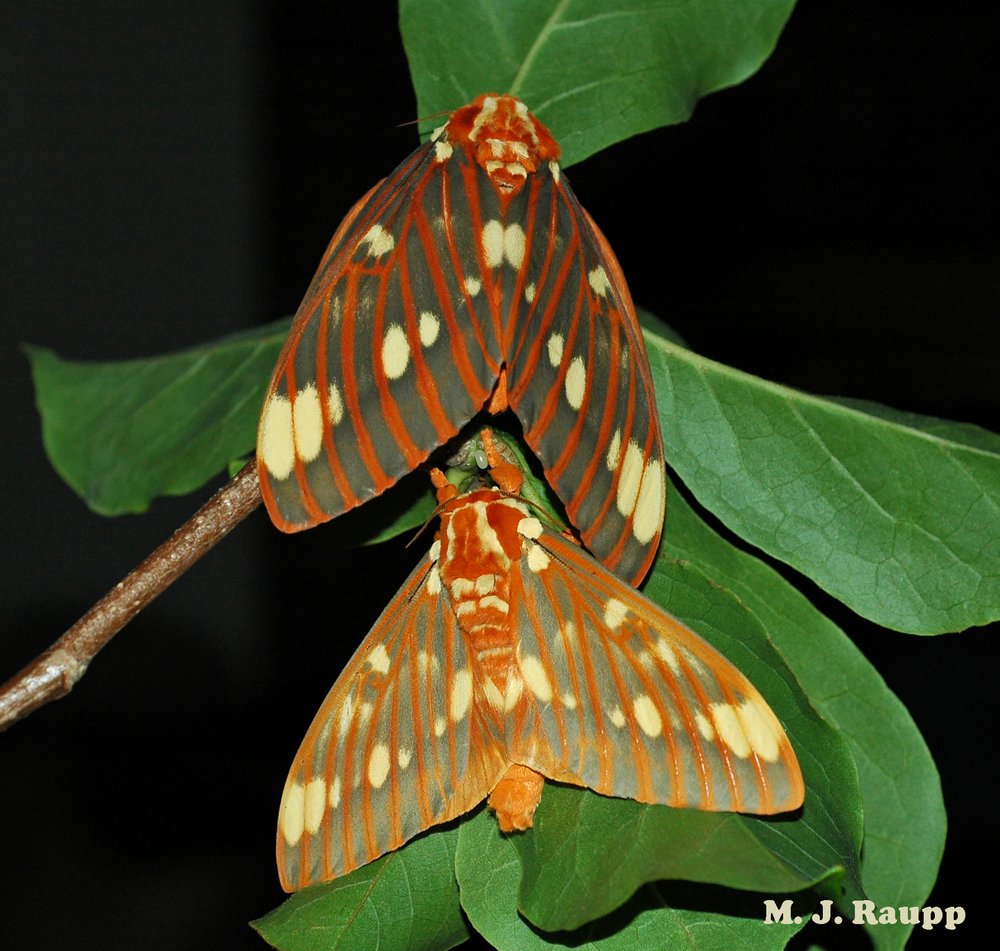
Female (above) and male (below) royal walnut moths make a regal couple indeed.
Shortly after the royal couple completed their connubial interlude, the female left her chamber and began to deposit eggs on almost every surface she encountered. While taking a momentary rest on my leg, she treated me to eight large eggs just above the ankle. The eggs of the royal walnut moth are typically laid on leaves of a tree suitable to meet the nutritional needs of the developing larvae. Eggs hatch in about a week and the larvae develop into one of the most striking caterpillars on the planet, the hickory horned devil. This giant of the silk moth world may attain a size of five to six inches when fully grown.
Leaves of walnut and hickory are favored sites for royal walnut moths to lay eggs.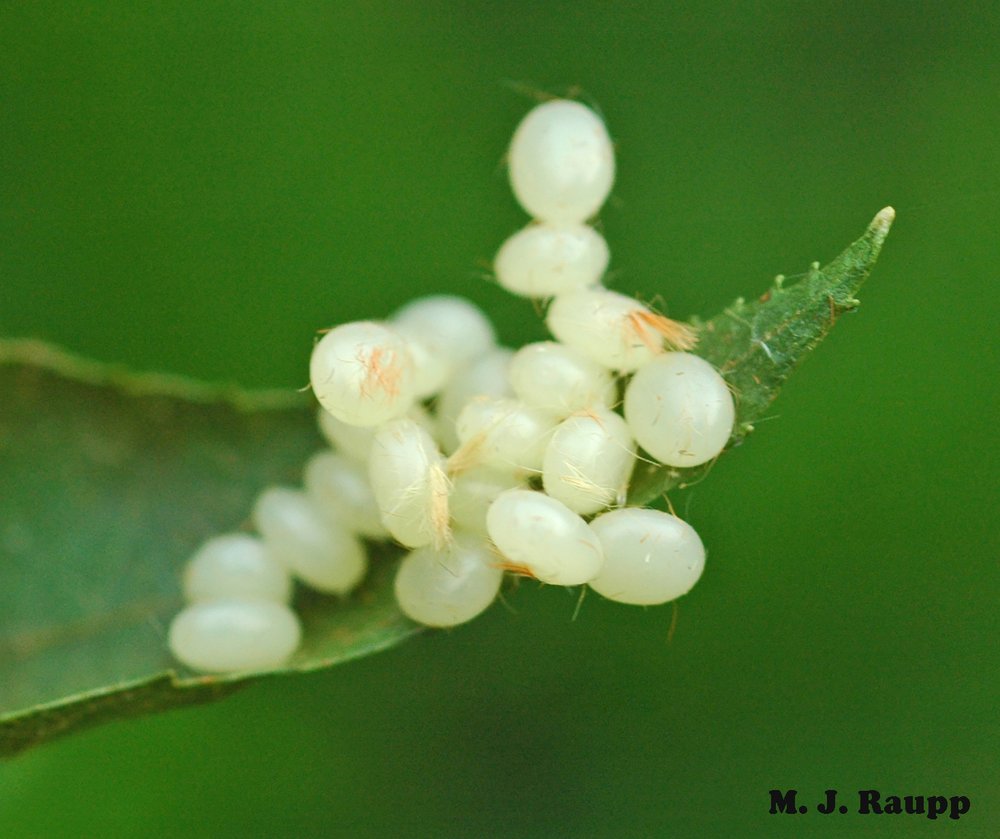
Favored hosts for larval development are plants in the family Juglandaceae such as walnut, butternut, and hickory. Hickory horned devils have also been recorded eating ash, beech, lilac, persimmon, sumac, and sweet gum. Fortunately, the male performed his task admirably, and after a few weeks dozens of small devils hatched from the eggs. The task of feeding this many hungry mouths soon exceeded the time budget of this bug geek and after a couple of weeks and a few quick molts, the caterpillars were emancipated to several walnut and hickory trees on the College Park Campus of the University of Maryland. Perhaps the wisdom and beauty of a creature that has transcended epochs of change on our planet can impart some of the same to this year’s incoming class of freshman. Let’s hope so.
Acknowledgements
Bug of the week thanks Bill Miller for providing the image of a hickory horned devil that served as the inspiration for this episode. Many thanks to Diane Pedicini for the cool video of a hickory horned devil crawling across her patio, and to Jeff and Linda for providing a giant pupa for this episode. David Wagner’s incomparable ‘Caterpillars of Eastern North America’ was used as a reference.
This post appeared first on Bug of the Week